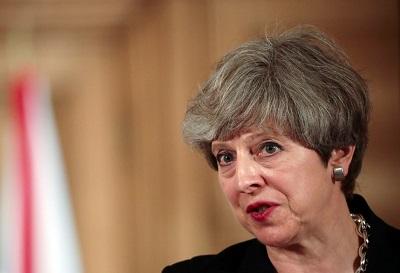Is the game up for Theresa May? What leadership theory tells us about her chances of survival

Theresa May famously promised “strong and stable leadership” during the 2017 general election campaign. It was never really clear what that soundbite meant, despite its repetition ad nauseam. And we still don’t know a great deal about May’s leadership practice. The details that allow us to really analyse prime ministerial leadership tend to come out in biographies and memoirs, only after a national leader has stepped down from the stage.
But while we wait to find out what it’s really like inside May’s government, pressure is mounting on her. Is she up to the job of leader?
While we don’t know much about May the prime minister, there is more to be said about May the home secretary – a position she held for more than six years. A large complex department like the Home Office can bring together more than 25,000 full-time employees. Add other politicians, temporary workers, contractors, consultants, and you have a small town of people.
From the talk around May’s Home Office tenure, she seems to have been a very competent administrator, a less competent manager of people, and not what we think of as a leader at all. This is reflected in her current catchphrase of “getting on with the job”. May presents herself as task-oriented and transactional. Theories of leadership suggest this means a low concern for people, which (rightly or wrongly) May has also been accused of recently.
For better or worse, we can also try to assess May’s leadership skills on what we can see and hear. Leaderly speeches are often carefully analysed for their meaning, but also for their rhetorical purpose – Steve Jobs’ presentations are especially rich data for this kind of analysis. For politicians, however, this mostly means contemporaneous media reporting, or set-pieces such as speeches and semi-spontaneous interactions such as encounters with voters.
Here again, May has been clearly positioned by journalists as a person with specific preferences for task and transaction. The somewhat cruel nickname “the Maybot”, implies emotional distance, machine-like responses, and a very specific utilitarian ethic. This may have worked for one of the 20th century’s greatest prime ministers, Clement Attlee, but contemporary politicians are expected to be quite different. Emotions are an aspect of their work, demonstrated through empathy and a connection with all sorts of people. At the same time, they are expected to be resilient in the face of public criticism, even of the insulting variety.
On borrowed time
When we compare May’s distant, vague and somewhat authoritarian presence with Jeremy Corbyn’s far more relational, connected and embodied leadership, the latter seems to fit more comfortably with contemporary public preferences – and indeed with contemporary leadership theory. In his time, Tony Blair, or at least early-era Blair, was a master of the embodied and relational performance, most memorably evoked in his words following the death of Princess Diana. As highlighted by the discourse specialist Norman Fairclough, Blair always managed to inject significant personal “ordinariness” into his talk. Corbyn, with his embodied but also substantive response to the Grenfell fire, is quickly becoming Blair’s heir – at least as far as relational connection with people is concerned.
So perhaps Theresa May is out of time, in more than one sense. Many leadership researchers focus on charismatic leaders, on the assumption that when we think of leaders, we tend to think of a specific variety of action and person – the charismatic, usually male, exceptional individual with a vision, who shows others the way to a better world. But does the world really need more charismatic leaders, like Donald Trump or Vladimir Putin? Does it need more men who claim to be great revolutionaries, who display their leaderly qualities in bizarre photo opportunities?
According to the sociologist Max Weber, there was an alternative charisma that came with holding great office. Such charismatics need not be great show people but can rely more on being competent and legitimate administrators. The key words here, however, are competence and legitimacy. May’s mishaps and stilted performances during the election campaign have only been compounded by the aftermath of the Grenfell fire and ongoing secrecy regarding her dealings with the DUP, during which she seems to have displayed little of either.
![]() May is clearly not behaving or acting as we expect a leader to – and she is also failing to be a convincing administrator to boot. This double bind could be one of the reasons why there is so much hostility directed towards her, within her party and on the streets. It’s difficult to see how she can reinvent herself as a leader from this position without seeming entirely inauthentic, and that is clearly a pressing problem for both her and the Conservatives. May’s leadership is on borrowed time.
May is clearly not behaving or acting as we expect a leader to – and she is also failing to be a convincing administrator to boot. This double bind could be one of the reasons why there is so much hostility directed towards her, within her party and on the streets. It’s difficult to see how she can reinvent herself as a leader from this position without seeming entirely inauthentic, and that is clearly a pressing problem for both her and the Conservatives. May’s leadership is on borrowed time.
Scott Taylor, Reader in Leadership and Organisation Studies, University of Birmingham and Owain Smolović Jones, former Lecturer in Organisation Studies, The Open University Business School
This article was originally published on The Conversation. Read the original article.
Upcoming Events
No events
